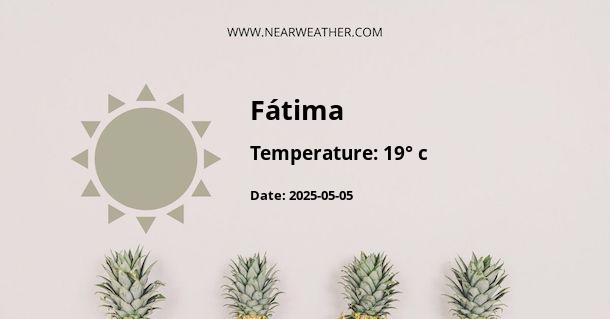Weather and Climate in Fátima, Argentina
Fátima, located in Argentina, experiences a mix of climates with distinct seasonal variations throughout the year. The region’s weather is influenced by a combination of geographic location, elevation, and the surrounding natural landscapes. Understanding the climate patterns in Fátima is essential for residents, visitors, and businesses seeking to make the most of the area’s weather conditions.
Seasonal Weather Overview
Fátima experiences four distinct seasons: spring, summer, autumn, and winter. Each season brings its own unique weather patterns and temperature ranges.
| Season | Average Temperature (°C) | Precipitation (mm) |
|---|---|---|
| Spring (September - November) | 15°C - 25°C | 50mm - 100mm |
| Summer (December - February) | 25°C - 35°C | 100mm - 150mm |
| Autumn (March - May) | 15°C - 25°C | 50mm - 100mm |
| Winter (June - August) | 5°C - 15°C | 30mm - 80mm |
As illustrated in the table above, Fátima's average temperatures and precipitation levels fluctuate significantly across the four seasons, which is important for outdoor activities, agricultural planning, and overall lifestyle adjustments.
Annual Climate and Weather Patterns
In addition to the seasonal variations, Fátima experiences specific climate and weather patterns throughout the year. Understanding these patterns can help individuals and businesses make informed decisions regarding activities, travel, and preparedness for weather-related events.
Rainfall Patterns
Fátima's rainfall patterns are characterized by moderate precipitation levels throughout the year, with slightly higher levels during the summer months. The region experiences an average annual rainfall of approximately 600mm, with the majority of precipitation occurring between October and March.

The rainfall chart provides a visual representation of Fátima's precipitation patterns, showcasing the distribution of rainfall across the months of the year.
Temperature Extremes
Fátima experiences temperature extremes, with hot summers and chilly winters. The highest temperatures are recorded during the summer months, often reaching 35°C or above, while winter temperatures can drop to 5°C or lower. These temperature variations influence various aspects of daily life, including agriculture, energy consumption, and outdoor recreation.
Wind Patterns
The region's wind patterns play a significant role in influencing the local climate. Fátima experiences moderate to strong winds, particularly during the spring and summer months. These winds contribute to temperature regulation and can impact outdoor activities and construction projects.
Impact of Climate Change
Like many regions around the world, Fátima is also experiencing the impact of climate change. The area has witnessed shifts in precipitation patterns, temperature fluctuations, and ecological changes. These alterations have implications for agriculture, water resources, and overall environmental sustainability in the region.
According to a study conducted by the National Meteorological Service, Fátima has experienced a 10% decrease in annual rainfall over the past decade, signaling a concerning trend that requires proactive measures to mitigate potential consequences.
Conclusion
Fátima, Argentina, presents a diverse climate with notable seasonal variations, distinct rainfall patterns, and temperature extremes. Understanding the region's weather and climate is crucial for both residents and visitors to make informed decisions and preparations for various activities and endeavors. As the impact of climate change continues to unfold, monitoring and adapting to evolving weather patterns will be essential for the sustainable development and resilience of Fátima and its surrounding areas.
A - Fátima's Latitude is -34.439030 & Longitude is -58.986549.
A - Weather in Fátima is 17° today.
A - Climate Conditions in Fátima shows clear sky today.
A - Humidity in Fátima is 74% today.
A - Wind speed in Fátima is 4.82 km/h. today.
